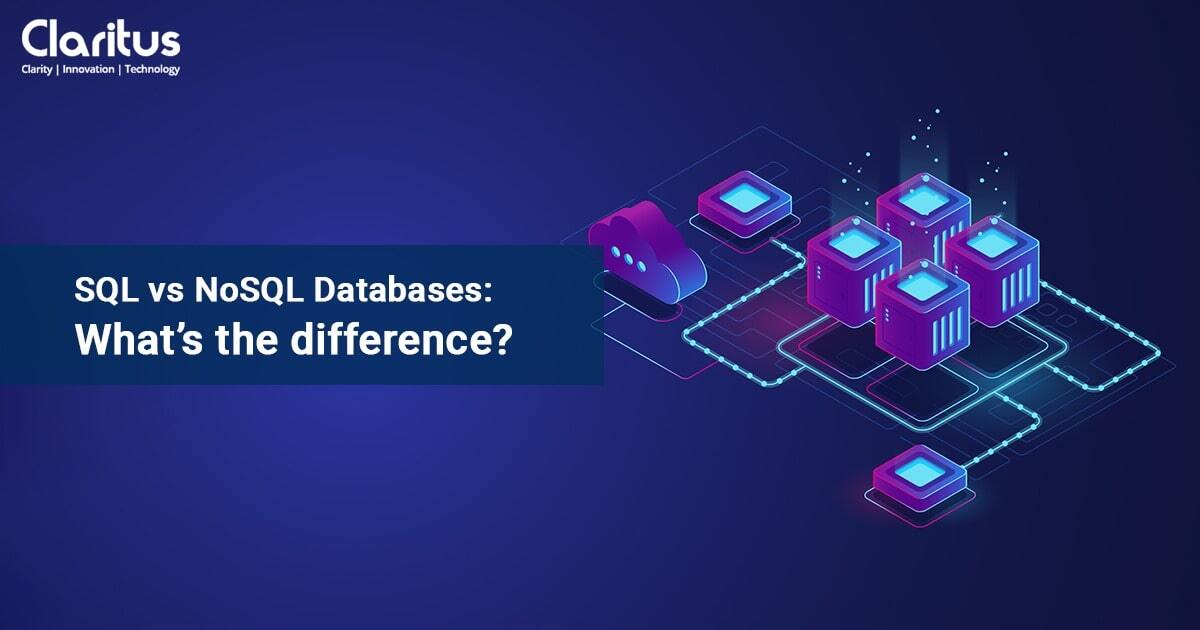SQL vs NoSQL Databases: What’s the difference?
What is SQL?
Acronym for Structured Query Language, SQL is a programming language. The language has been extensively used since 1970s to manage data in RDBMS (Relational Database Management Systems).
It has also been utilized to reduce data duplication in the beginning, when storage cost was very high. Currently, the language is still used very often for querying relational databases, where the data are stored in rows and tables interconnected in multiple ways.
For dealing with relational databases, SQL is the go-to language. Relationships are denoted by a relational database in the form of tables.
With the help of SQL programming, database records can be efficiently and appropriately inserted, searched, updated or deleted. SQL can also maintain and optimize databases apart from other tasks. Relational databases like Oracle, Microsoft SQL Server, Sybase and MySQL Database make use of SQL.
What is NoSQL?
The concept of NoSQL was announced by Carl Strozz in the year 1998 and the term was coined only around the beginning of the year 2000. It stands for “Not Only SQL” or “Not SQL” although the databases occasionally do accommodate a few SQL commands.
It’s a non-relational database which does not use rows and columns, and does not need a fixed schema. It has more flexibility and is easy to scale. The database is utilized for distributed data stores with requirements for massive data storage. It is also deployed for real time web apps and big data.
Conventional RDBMS makes use of SQL syntax for storing and retrieving data while a NoSQL database system incorporates various database technologies and therefore stores structured, unstructured, semi-structured and polymorphic data.
The differences
1. Type:
SQL databases are essentially RDBMS. On the other hand, NoSQL databases are non-relational or distributed type of databases.
2. Language:
SQL databases utilize the SQL. The language is extremely powerful, very versatile and widely used. So, it’s the perfect choice for highly complex queries. However, it’s limiting and regulatory in nature to some extent. SQL requires predefined schemata to get oriented with the data structure before it can be worked with and it’s imperative that all the data follow the same structure. Therefore, a change in the structure can be both difficult and disruptive for the entire system.
A NoSQL database has dynamic schemata so that alternative structures can be represented, many a time beside each other, which facilitates greater flexibility. It requires minimum planning and more freedom is available while adding new fields or attributes. The flexibility implies that even devoid of an initial defined structure, documents can be created. Every document may possess its own distinctive structure. The syntax differs from one database to the other and fields can be inserted when required.
3. Scalability:
Most SQL databases are vertically scalable almost always. This signifies that load can be augmented on a single server by adding components such as RAM, CPU or SSD. On the contrary, NoSQL databases are horizontally scalable since they use the master-slave architecture. Therefore, more traffic can be managed with the sharding or partitioning logic or by adding more servers to the NoSQL database. So, there is a possibility that the databases may eventually become more powerful making them the preferable option for huge, dynamic and changeable data sets.
4. Properties:
SQL and NoSQL obey different set of rules to sort out transactions. SQL databases adhere to ACID properties, which are Atomicity, Consistency, Isolation and Durability. However, NoSQL technologies abide by the CAP theorem, which states that in a distributed database, only two of the following attributes can be assured at the same time. They are Consistency, Availability and Partition tolerance.
5. Support and communities:
SQL databases encompass huge communities, have stable databases together with established and verified standards. For these databases, many independent consultations, experts and multiple samples and cases etc. are available to assist with very large-scale deployments while programmers new to working with relational data also get help.
However, although adopted swiftly, NoSQL technologies have smaller communities, and there are restricted number of experts, for large scale NoSQL deployments. Again, while many SQL languages are proprietary in nature and associated with big individual vendors, NoSQL communities have the advantage of open systems and collective responsibility to onboarding users.
6. Structure:
SQL databases are table dependent while NoSQL databases are document dependent, graph databases, key-value pairs or wide-column stores. So, SQL relational databases are a preferable option for applications in need of multi-row transactions like an accounting system or for legacy systems created with a relational structure in mind.

